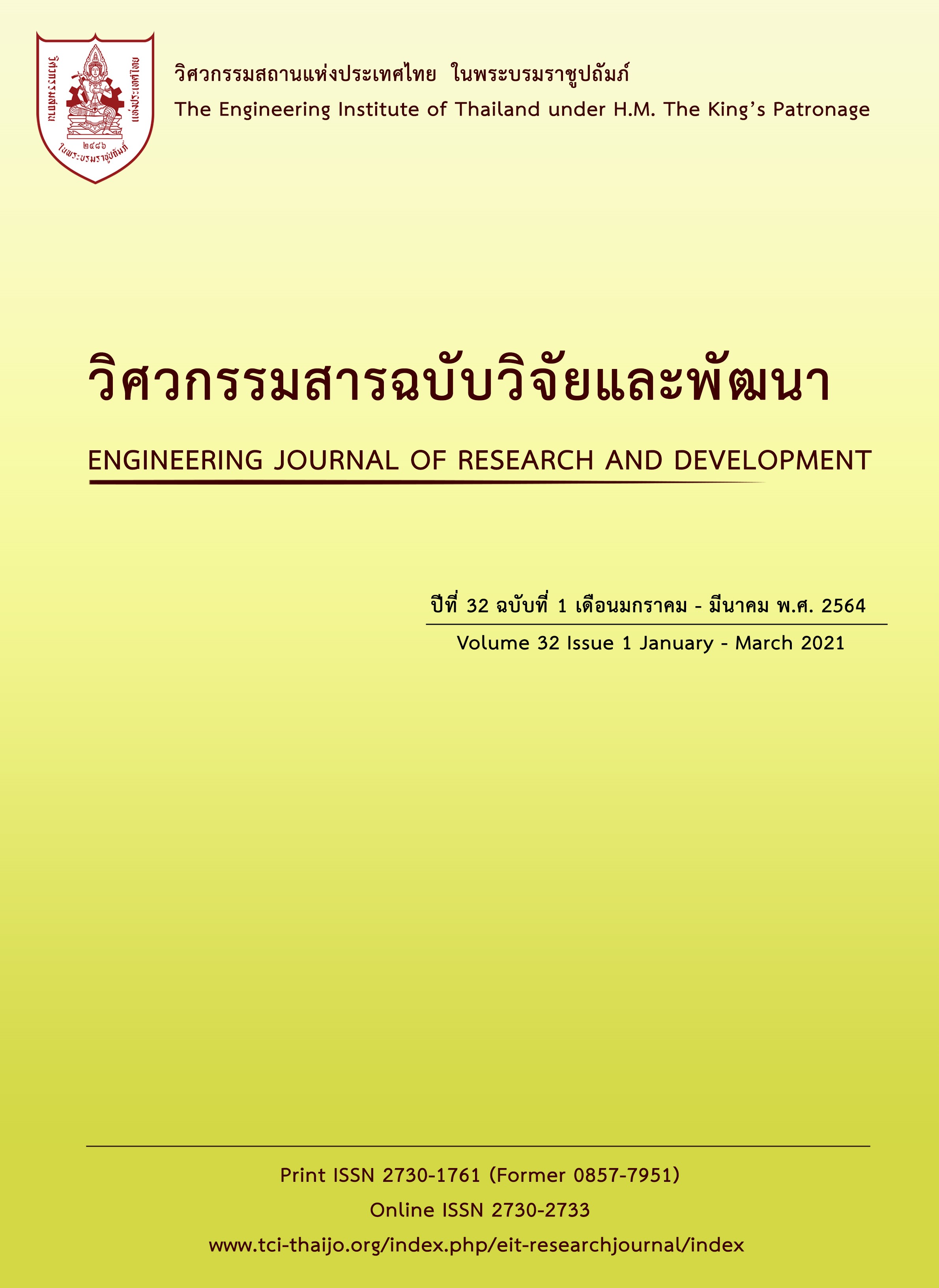A Long-Term Performance Monitoring of Asphalt Pavement by Rutting Measurement and Embedded Instrumentation: A Case Study of Sapphaya District, Chinat Province
Main Article Content
Abstract
Asphalt pavement life is typically a function of traffic volume and environment condition. Asphalt pavement gradually deteriorates over its service life. This study focuses on the long-term performance monitoring of asphalt pavement by rutting measurement and embedded instrumentation. Results of this study indicated that strains increased with the number of equivalent single-axle load (ESALs). Rut depth also increased with strains. Rate of increasing strains was considerably high at the beginning but gradually decreased with ESALs. The increase in the measured rut depth was consistent with the increase in permanent deformation obtained from embedded instrumentation. Finally, the study suggested that the measured strains from embedded instrumentation could be estimated the long-term rutting of asphalt pavement.
Article Details
The published articles are copyright of the Engineering Journal of Research and Development, The Engineering Institute of Thailand Under H.M. The King's Patronage (EIT).
References
[2] กรมทางหลวง. โครงการวิจัยและพัฒนาโครงสร้างถนนของกรมทางหลวง. รายงานขั้นสุดท้าย. สำนักวิจัยและพัฒนางานทาง, กรมทางหลวง, 2561.
[3] Henning. The development of pavement deterioration models on the state highway network of New Zealand. The University of Auckland, 2008.
[4] Di Wang, Augusto Cannone Falchetto, Matthias Goeke, Weina Wang Tiantian Li and Michael P. Wistuba. Influence of computation algorithm on the accuracy of rut depth measurement. Journal of Traffic and Transportation Engineering (English Edition), 2017, 4(2), pp. 156-164.
[5] T. Avila-Esquivel, Y. Araya-Porras, J.P. Aguiar-Moya, and L.G. LoriaSalazar, Development of permanent deformation models for granular materials and soils, Proceedings of the 95th Annual Transportation Research Board, Washington, D.C. 2016.
[6] Fabricio Leiva-Villacorta, Adriana Vargas-Nordcbeck, and José P. Aguiar-Moya. Permanent deformation and deflection relationship from pavement condition assessment. International Journal of Pavement Research and Technology, 2017, 10(4), pp.352-359.
[7] Loay A. Al Khateeb, A. Saoud, and M.F. Al-Msouti. Rutting prediction of flexible pavements using finite element modeling. Jordan Journal of Civil Engineering, 2011, 5(2), pp.173-190.
[8] S. Agardh. Rut Depth Prediction on Flexible Pavements - Calibration and Validation of Incremental-Recursive Models. Department of Technology and Society, Lund University, 2005, 227.


